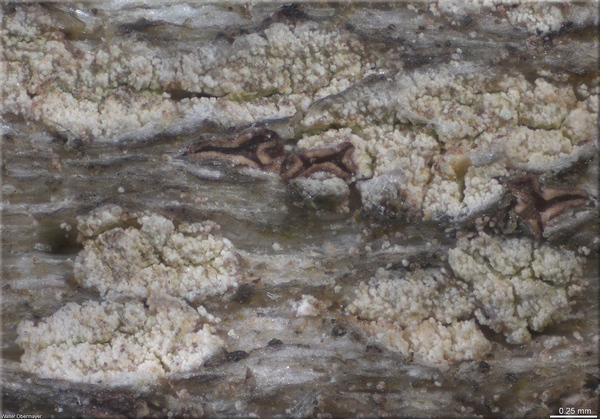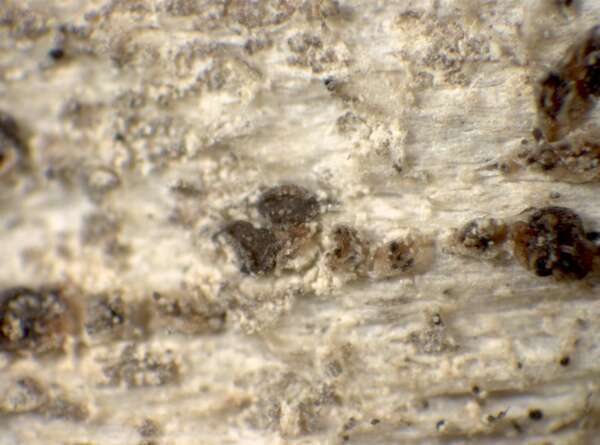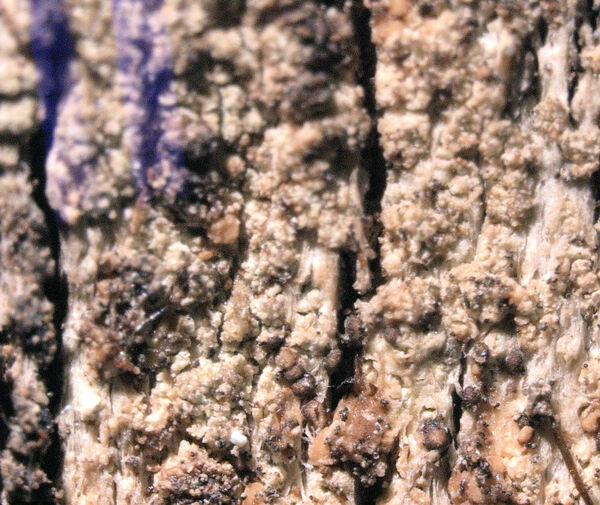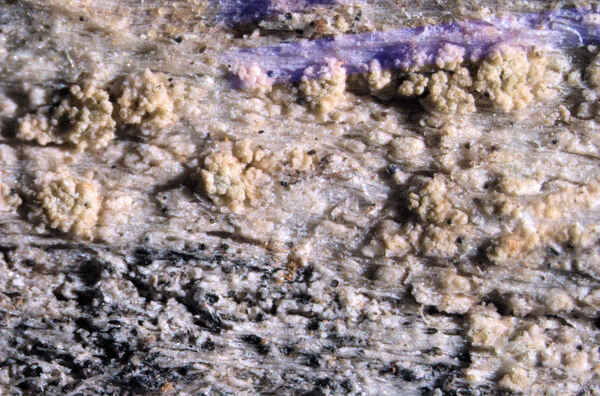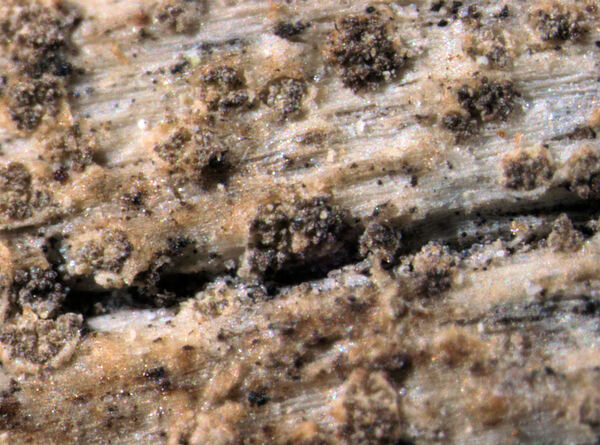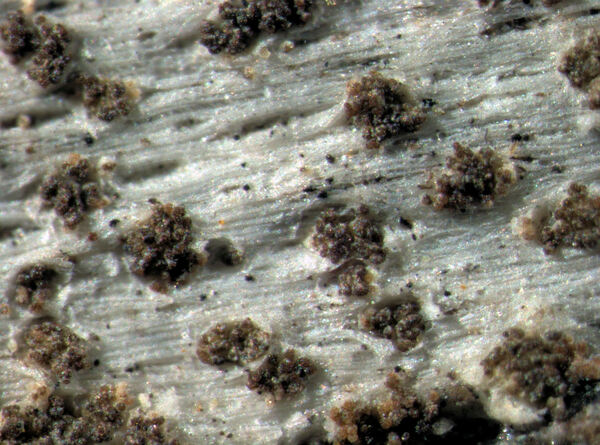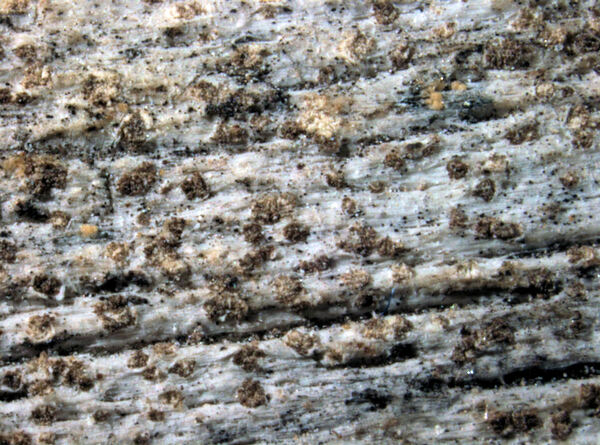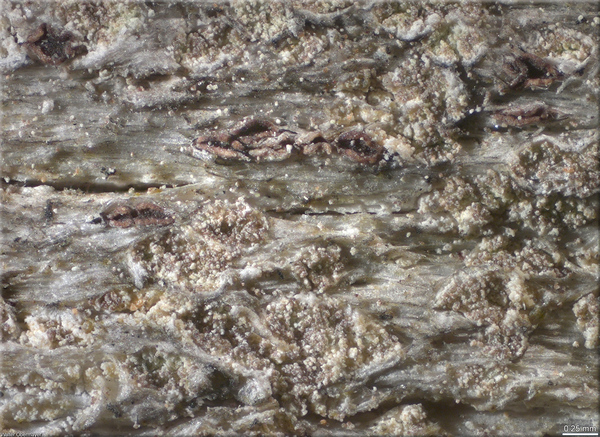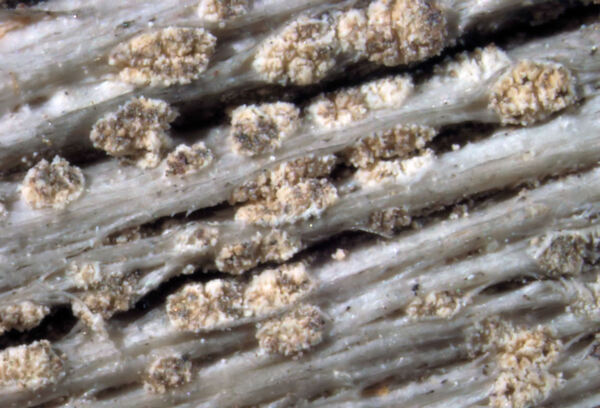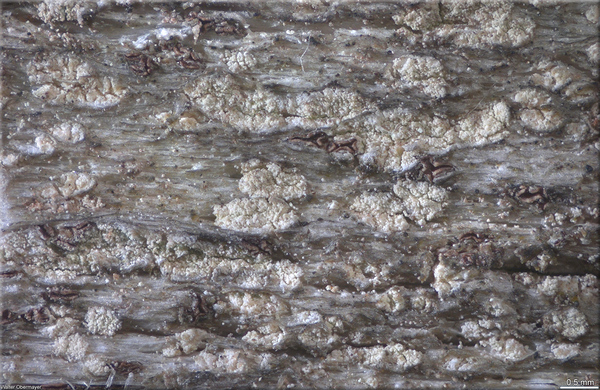Xylographa vitiligo (Ach.) J.R. Laundon
Lichenologist, 2: 147, 1963. Basionym: Spiloma vitiligo Ach. - Meth. Lich.: 10, 1803.
Synonyms: Agyrium rufum sensu Anzi; Agyrium spilomaticum Anzi; Xylographa spilomatica (Anzi) Th. Fr.
Distribution: N - Frl, Ven (TSB 1966), TAA (Thor & Nascimbene 2007, Nimis & al. 2015, Nascimbene & al. 2022), Lomb (Spribille & al. 2015), Piem, VA (TSB 33605), Lig (TSB 33605). C - Abr (Nimis & Tretiach 1999). S - Bas (Nascimbene & al. 2021), Cal (Puntillo 1996).
Description: Thallus crustose, endosubstratic to thinly episubstratic, forming endoxylic tubercles which burst open into concave to slightly convex soralia. Soralia rounded to fusiform, 0.2-0.6(-1) x 0.2-0.3(-0.8) mm in diam., often lacking a strong internal mycelial cushion, at first often brown or grey-mottled due to pigmentation of the external soredia, later more or less dirty white, often confluent and forming elongate, several mm long patches; soredia globose, with a more or less distinct paraplectenchymatous wall, 19-45 μm across, becoming conglutinated into colourless or brown, 22-50(-70) μm wide consoredia. Apothecia rare, solitary or in up to 3 mm wide clusters, more or less rounded, ellipsoid or fusiform, rarely substellate, usually straight, occasionally slightly curved, 0.3-0.6 x 0.1-0.3 mm, with a concave to flat, greyish white to brown disc, and an often reflexed, brown, often glossy proper margin. Exciple brown in outer part, colourless within; epithecium brown; hymenium colourless, 72-100 μm high; paraphyses 1-1.5 μm thick at mid-level, the apical cells up to 2.5(-3.5) μm wide; hypothecium colourless. Ascospores 1-celled, hyaline, elongate with rounded ends to ellipsoid, (8-)10–14(-16.5) x 4-7.5 μm. Photobiont chlorococcoid. Spot tests: soralia K+ yellow, C-, KC-, P+ yellow-orange. Chemistry: stictic acid plus traces of satellites. Note: a mainly boreal-montane species found on decaying, decorticated but still hard stumps, mostly of conifers, especially near the base, or on fallen trunks, with optimum near treeline.
Growth form: Crustose
Substrata: lignum
Photobiont: green algae other than Trentepohlia
Reproductive strategy: mainly asexual, by soredia, or soredia-like structures (e.g. blastidia)
Commonnes-rarity: (info)
Alpine belt: absent
Subalpine belt: rather common
Oromediterranean belt: absent
Montane belt: rare
Submediterranean belt: extremely rare
Padanian area: absent
Humid submediterranean belt: absent
Humid mediterranean belt: absent
Dry mediterranean belt: absent
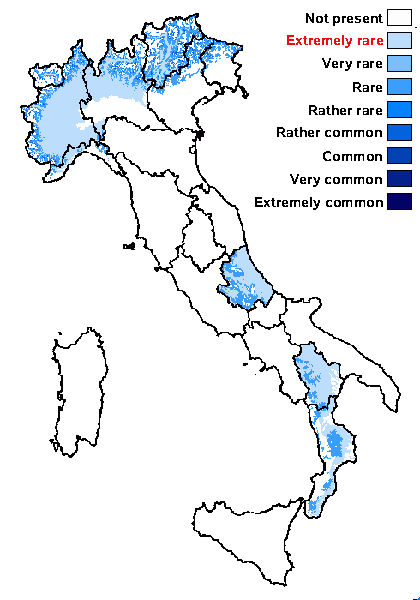
Predictive model
Herbarium samples
Growth form: Crustose
Substrata: lignum
Photobiont: green algae other than Trentepohlia
Reproductive strategy: mainly asexual, by soredia, or soredia-like structures (e.g. blastidia)
Commonnes-rarity: (info)
Alpine belt: absent
Subalpine belt: rather common
Oromediterranean belt: absent
Montane belt: rare
Submediterranean belt: extremely rare
Padanian area: absent
Humid submediterranean belt: absent
Humid mediterranean belt: absent
Dry mediterranean belt: absent

Predictive model
| Herbarium samples |
 Index Fungorum
Index Fungorum
 GBIF
GBIF
